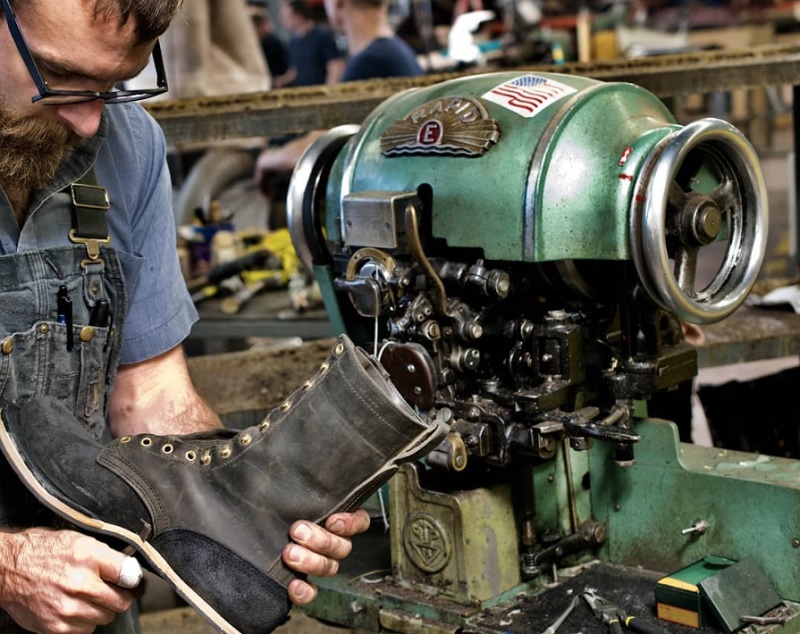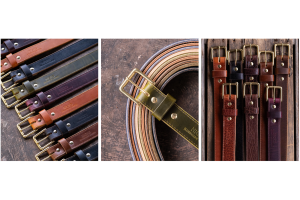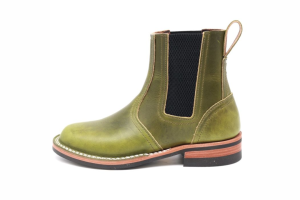Are Composite Toe Boots As Safe As Steel Toe Boots? Composite Toes Explained

The quick answer is composite toe boots can be as safe as steel unless they aren't. The difference emerges when a composite toe is subjected to a stress beyond what it's capable of absorbing safely.
Therefore, it's a good idea to understand the application that you're getting a pair of safety toe work boots for. Steel toe boots are either a good idea or may even be mandatory in some trades, whereas a safety toe may only be recommended in others.
It can be the case that a composite toe is every bit as safe as steel toe boots. It's also the case that some composite toe boots are not, and until you understand why, you're going to feel lost looking at all the different safety toe boots on the market.
So let's talk about the difference between them, and what you should know about both.
Not All Composite Toe Boots Are The Same

Composite toe boots come in two varieties: those that are ASTM rated, and those that are not.
If you need an actual safety toed boot because it is required by work, you need to get an ASTM-rated pair of serious work boots, period. If you work around heavy equipment or in a warehouse with heavy pallets stored above-ground, get ASTM-rated boots.
If you're just looking for a bit of extra toe protection because you're tired of stubbing your toe on things...you can relax a bit.
So, what's the difference?
The American Society for Testing and Materials (ASTM) has protocols for testing various types of PPE, including boots with safety toes. The rating is governed by F2413-05.
They have two significant ratings, I and C, which stand for "Impact" and "Compression," in other words a minimum amount of force the toe box can be struck with and the amount of weight the toe box can withstand.
The ratings are expressed as a rating of 50 or 75, meaning an I rating of 50 ft-lbs or 75 ft-lbs of impact force, and a C rating of 1750 lbs (a 50 rating) or 2500 lbs (75 rating) of weight being applied to the toe box without deformation.
Now, composite toe boots - just like steel toe work boots - have either been rated by ASTM or they haven't. Those that are deemed acceptable and have been given an ASTM rating are acceptable in the trades that either mandate safety toes or where employers require it for safety.
A particular pair of composite toe boots may be perfectly strong enough to achieve 75/75 rating, but may be unrated. It may also be that a pair of composite toe boots aren't as well, but it's impossible to know.
Are Composite Toes As Safe As Steel?

Composite toe boots that are ASTM-rated are as safe as a pair of steel toe boots with the same rating. If a composite toe boot is rated 50/50 by the ASTM, it's as strong as a steel toe boot with a 50/50 rating.
The ASTM gets sample pairs of boots from boot makers, and then tests them to provide the rating. If they meet the 50 or 75 standard for impact or compression, they get rated. If not, the manufacturer can pound sand.
In terms of "safety" or more to the point which has the higher ultimate failure point...that's a good question.
In terms of materials, composites can be made incredibly strong and incredibly resistant to a lot of different kinds of force or stresses. Steel bends at a certain point, but composites tend to be more brittle.
Think of it this way: crash a car with a steel body, and it crumples. Crash a car with a carbon fiber body (like modern day race cars) and the body disintegrates in the impact. Watch crashes from LeMans racing over the years, and you'll see the difference.
That's wonderful to speculate about materials and what they do when pushed to the failure point, but it's entirely theoretical until someone finds the exact impact force or compression force that causes a particular pair of boots' safety toe to break or bend out of shape.
So what does any of that matter to work boots?
So long as the rating is the same...there's little difference in safety in any way that anyone can actually measure.
Therefore, if you need a pair of safety toe boots for work, and your employer requires or OSHA requires you to wear safety toe boots, look for a pair that's rated. An actual ASTM-rated boot is what you need in that case.
Wearing Composite Toe Boots Vs Steel Toe Boots
So, if you're going to get a pair of safety toe boots and wonder what the practical differences are besides the safety ratings, there are a few things to know.
A lot of people that work in a number of trades that don't require a safety toe will still buy them, either in case of dropping lighter objects or just to keep from having to worry about hitting their toe on anything.
Composite toe boots are often perceived as being a little more comfortable as the toe box will be a little more flexible. Composites are also natural insulators rather than conductors, so they will also be a little warmer in cold weather.
In either case, what you'll want to look for is a pair of boots with a generous toe box, which means your toes will have a little more wiggle room. The claustrophobic fit is a common complaint with safety toe boots. It would be well worth the time and money to get a custom pair of work boots made, so you're not wasting time picking through whatever offerings at the store hoping they've got what you need.
Therefore, it's important to buy a pair of steel or composite toe boots that fit correctly. A quality pair of boots that fit your feet, and give you the support you need while on them all day, will be comfortable to wear AND will keep your feet safer.






